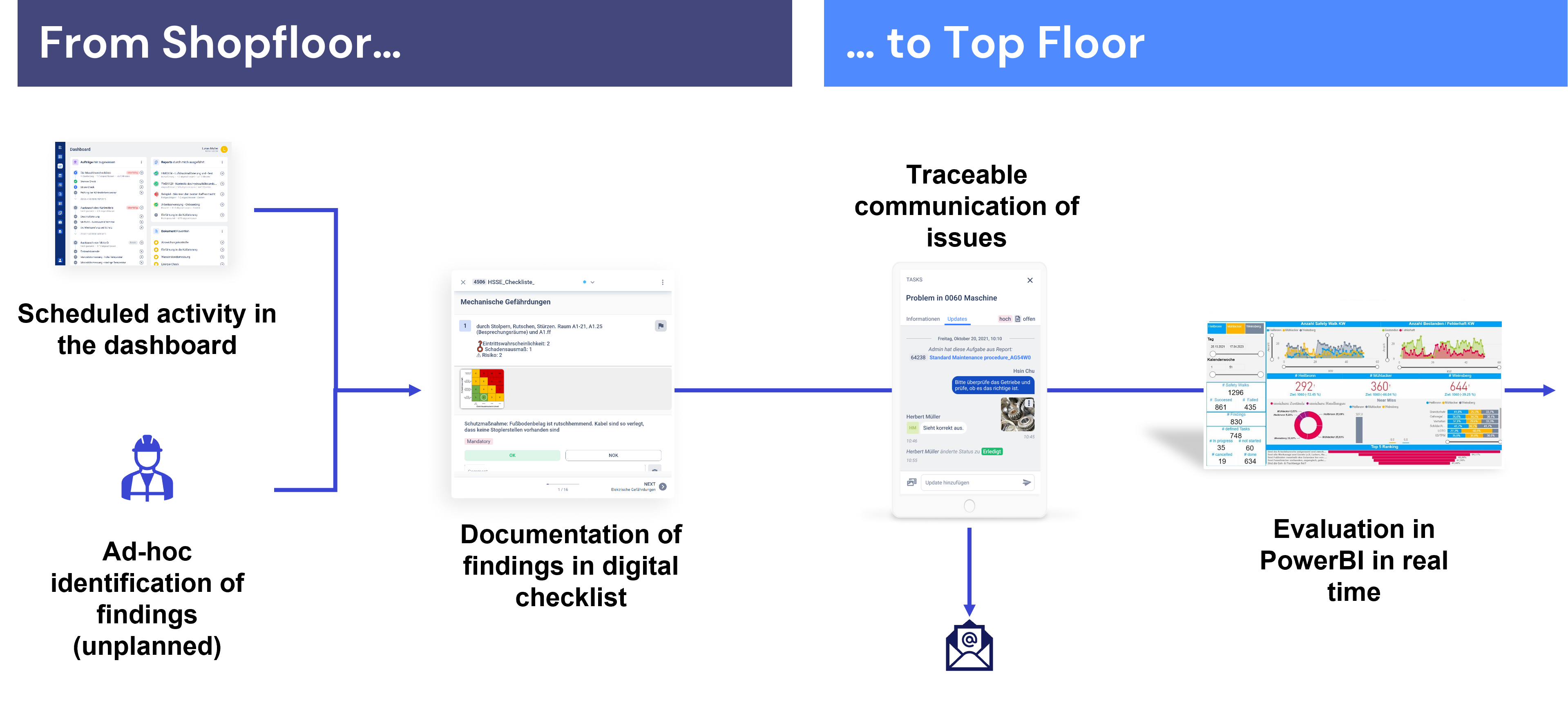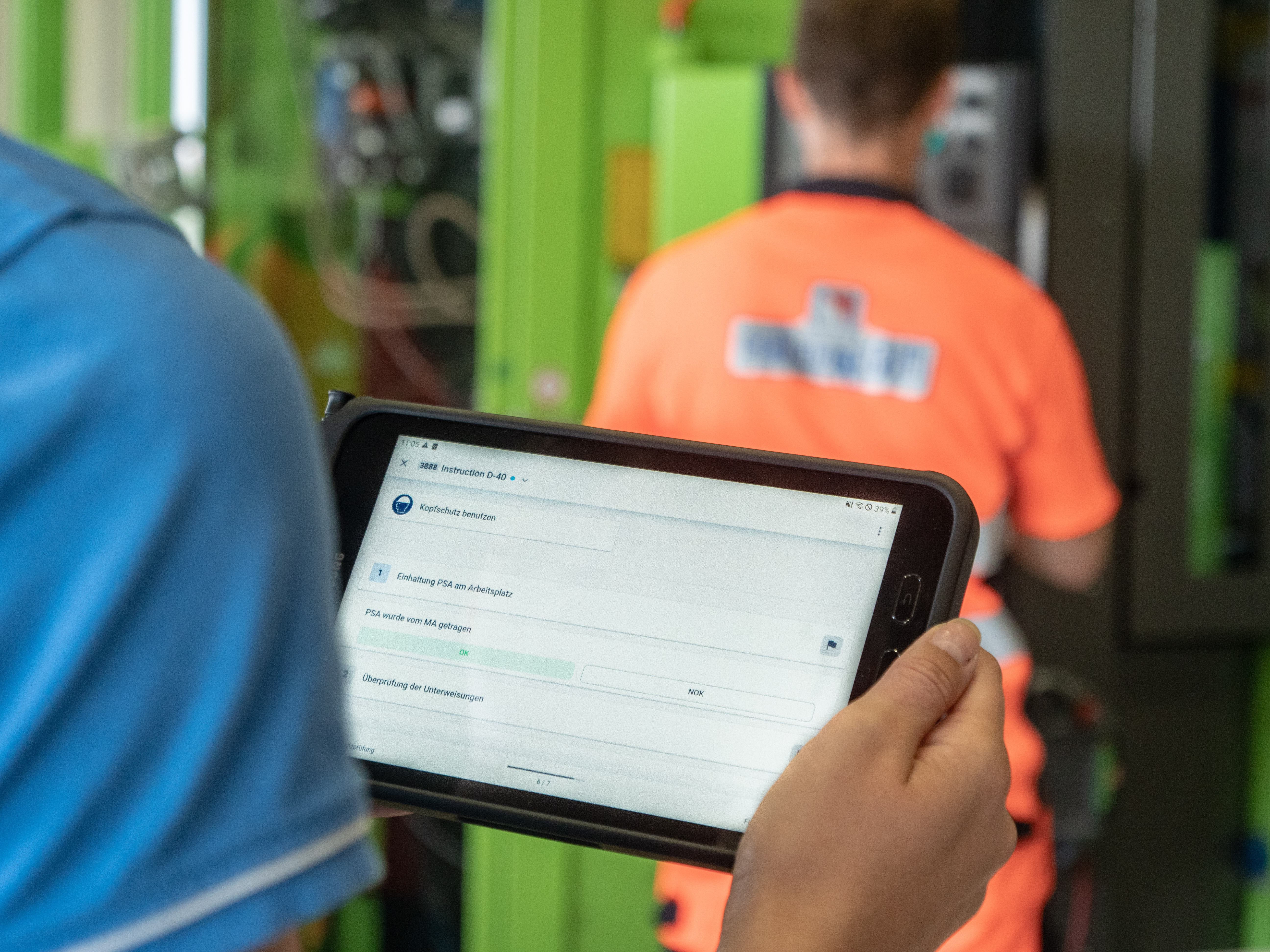What is a Safety Walk?
Creating a safe work environment is crucial for the well-being of employees and the success of any organization. One valuable tool for achieving this is conducting safety walks. In this article, we'll explore the concept of safety walks, their importance, and how they can be conducted to enhance workplace safety.
Safety walks, also known as safety inspections or safety tours, are proactive measures taken by organizations to identify potential hazards and risks in the workplace. During a safety walk, a designated team or individual walks through the work area, systematically inspecting various aspects of safety protocols, equipment, facilities, and employee practices.

Why are Safety Walks Important?
Safety walks serve multiple important purposes in maintaining a safe work environment:
Hazard Identification Safety walks help in identifying potential hazards that may compromise employee safety. This includes recognizing physical hazards such as faulty machinery, unsafe practices, inadequate lighting, or cluttered pathways.
Risk Assessment By conducting safety walks, organizations can assess the level of risk associated with identified hazards. This evaluation enables them to prioritize actions and allocate resources effectively to mitigate the most critical risks.
Employee Engagement Involving employees in safety walks promotes their active participation in creating a safer workplace. Employees can provide valuable insights into potential risks they encounter on a daily basis, allowing for a more comprehensive assessment.
Continuous Improvement Safety walks foster a culture of continuous improvement. By regularly conducting these inspections, organizations can monitor the effectiveness of implemented safety measures, identify recurring issues, and implement corrective actions to enhance safety protocols.
Conducting an effective Safety Walk
To ensure the effectiveness of safety walks, follow these essential steps:
Planning Establish a clear plan for the safety walk, including the objectives, areas to be covered, and the team members involved. Define the checklist or criteria that will be used to assess safety conditions.
Communication Inform employees about the safety walk in advance to encourage their cooperation and participation. Clear communication will also help set expectations and emphasize the organization's commitment to safety.
Inspection Process During the safety walk, systematically evaluate different aspects such as machinery and equipment, emergency exits, fire safety systems, ergonomics, electrical systems, and housekeeping practices. Encourage the team to take notes, capture photos, and document any observed hazards or areas for improvement.
Reporting and Follow-up After completing the safety walk, compile the findings into a detailed report. Include recommendations for addressing identified hazards and implementing corrective actions. Assign responsible individuals or teams to follow up on these recommendations and track progress until completion.
Continuous Monitoring Regularly schedule safety walks to maintain a proactive approach towards workplace safety. This allows for ongoing hazard identification and helps ensure that safety measures remain effective over time.

How do you benefit from digital safety inspections in practice?
In practice, it is possible to increase transparency on the store floor, from the collection of information from the employee to systematic evaluation in PowerBI. There are often 2 forms of walk-throughs for this purpose: Planned and unplanned walk-throughs. In the case of planned safety walks, the employee is provided with the information of the due date and the corresponding checklist in the dashboard. The unplanned safety walks can be easily started by anyone on the store floor.
If there is a finding, for example a pool of oil has been identified on the floor, the employee can document this finding, e.g. by photo and comment, and start an action via task management. The processing of the defect is discussed and documented in a comprehensible manner via a chat window. Once the issue has been resolved, the user receives feedback and the incident, the action taken and the solution are documented.
For the security teams this means:
A huge increase in safety rounds
An enormous contribution to the safety culture by distributing the responsibility to all
Faster identification and resolution of findings
More transparency on problems and solutions, so that sustainable measures can be identified and implemented
Conclusion:
Safety walks play a vital role in maintaining a safe work environment. By systematically identifying hazards, assessing risks, and actively engaging employees, organizations can enhance workplace safety and foster a culture of continuous improvement. Incorporate safety walks into your safety management program to create a safer and more productive workplace.
You want to optimise your safety inspection?
Get to know the software in just 3 minutes
Discover the functions of Operations1 in an interactive product tour and get to know our platform.
